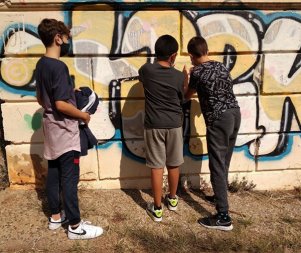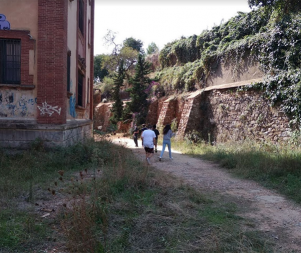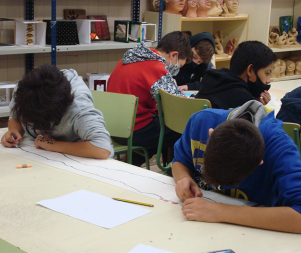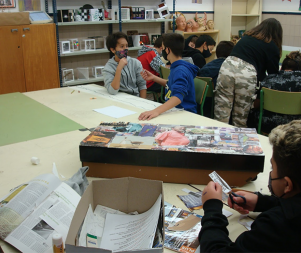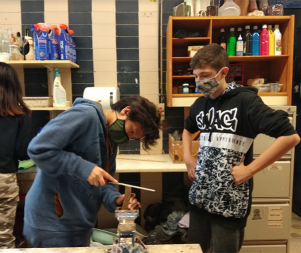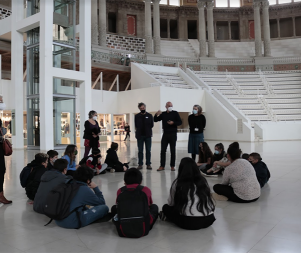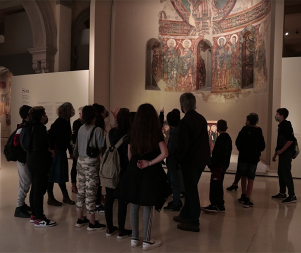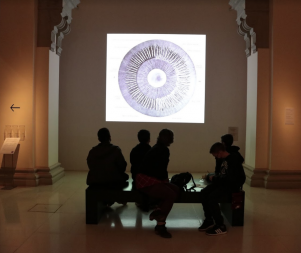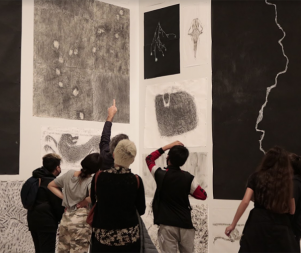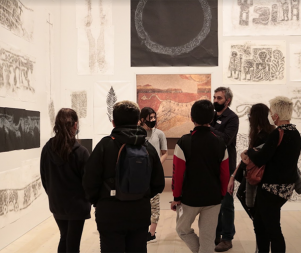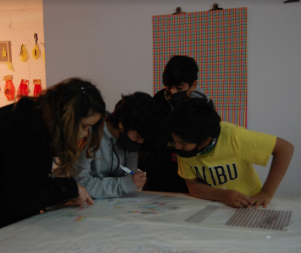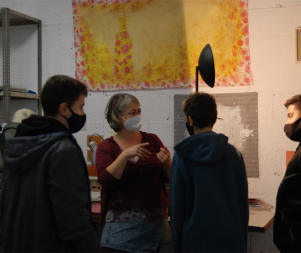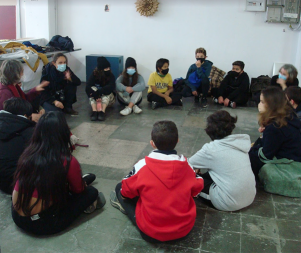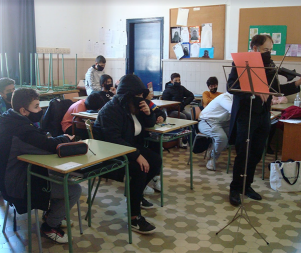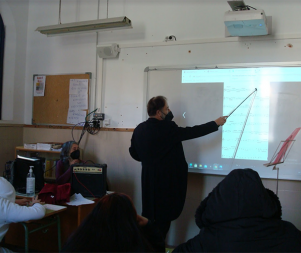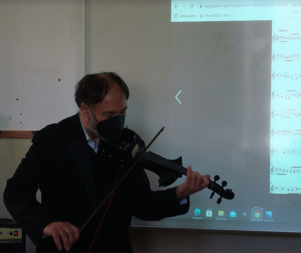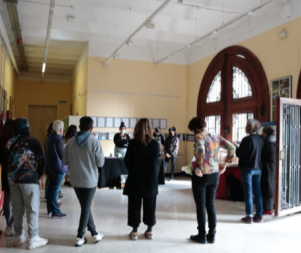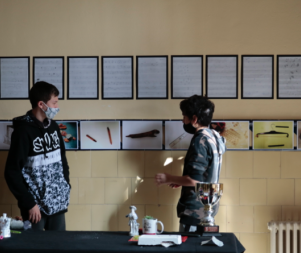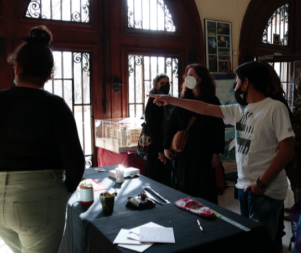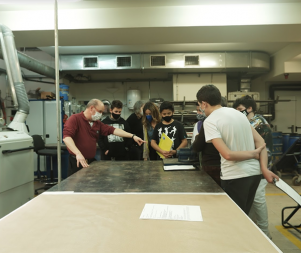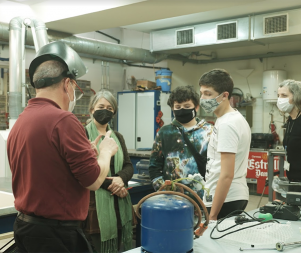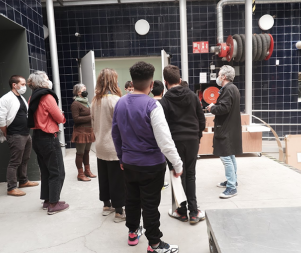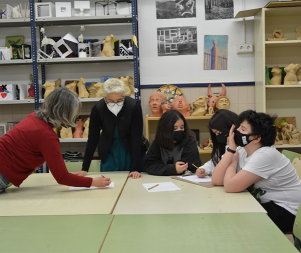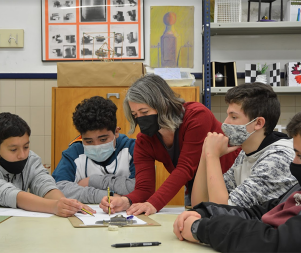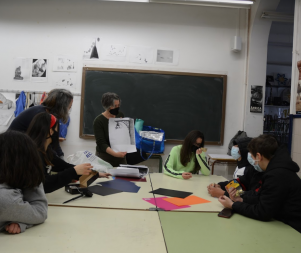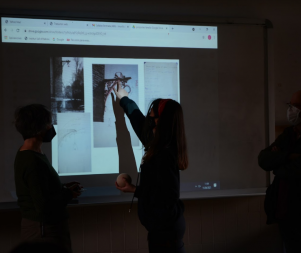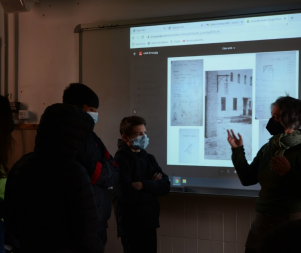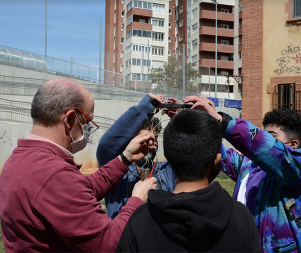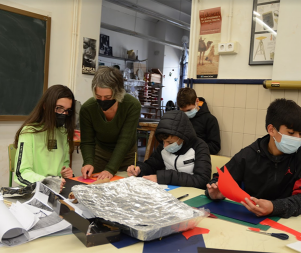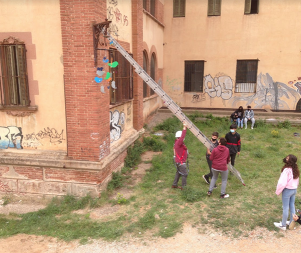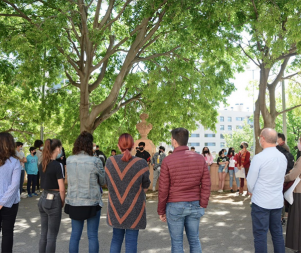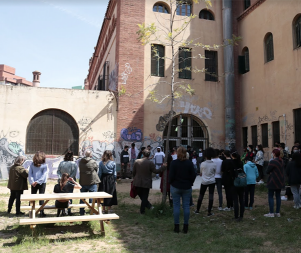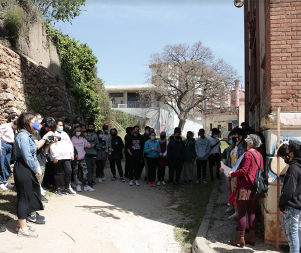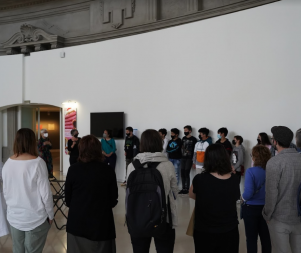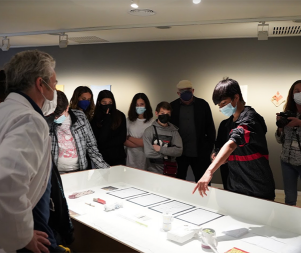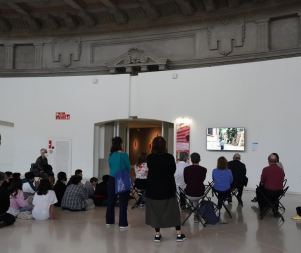- 14th EDITION 2022 / 2023
- 13th EDITION 2021 / 2022
- 12th EDITION 2020 / 2021
- 11th EDITION 2019 / 2020
- 10th EDITION 2018 / 2019
- 9th EDITION 2017 / 2018
- 8th EDITION 2016 / 2017
- 7th EDITION 2015 / 2016
- 6th EDITION 2014 / 2015
- 5th EDITION 2013 / 2014
- 4th EDITION 2012 / 2013
- 3rd EDITION 2011 / 2012
- 2nd EDITION 2010 / 2011
- 1st EDITION 2009 / 2010
Svantje Bußhoff IN RESiDENCE at the School Vall d’Hebron
Cracks and holes: research into the school’s building
The first sessions of the work are dedicated to reflecting on what is damaged, broken, cracked and the possibility of its repair. This is a school that is located in a historic building, where they search for holes, cracks and damaged elements and made a record of them, either through drawing or frottage.
Repair objects: the materials and the hospital box
The repair involves first observing the materials, identifying how the object has become broken or damaged and evaluating the tools and techniques needed for the repair. It is for this reason that they begin by searching for objects that they can repair to experiment and find ways of doing it. That said, the repair can give a new use to the object, giving it a new aesthetic value or a new function.
The National Museum and the work of Oriol Vilapuig
To celebrate the temporary exhibition of Oriol Vilapuig “Sound. Imprints and figurations in the Valls d’Àneu”, at the National Art Museum of Catalonia, a guided tour was organised by the creator. In this way it is possible to discover the frottage technique used by Vilapuig as well as observe fissures and cracks in other buildings and constructions (Romanesque in this case) as well as the Romanesque paintings in the museum’s collection.
Visit to the artist’s workshop: Edifici Freixas
A visit is organised to the workshop that Svanje Bußhoff shares with another three creators, in order to see first-hand the creation processes, materials and proposals that the creator is working on and also those of the other creators that have very diverse proposals, materials and processes.
The holes become scores
Using the record of the holes from various areas of the school, these are transposed onto manuscript paper. This results in a series of impossible scores that are proposed to a violinist Branislav Grbic, so that he can play them during a musical session.
Exhibit the work
In preparation for the mash-up session, the school entrance hosts a small sample of the works: books with the holes, repaired objects and manuscript paper. Thus, a short explanation of the work processes is given and the results put on display. It is attended by some of the teachers and classmates of the centre.
Field trip to the restoration workshops at the National Museum: the trades
Learn about the trades dedicated to restoration at a museum like the National Museum of Art: the restoration of paper and paint on canvas, the repair of wood and the repair and maintenance of the building itself which, like the school, is very old and in need of maintenance. The students meet several professionals, among them Xavi Pérez; who is a very good connection because he is an ex-student of the school.
Project sketches
The end project is to be associated with the school’s building. Part of the session is dedicated to looking for new elements and some old but very attractive lamps were located at the back of the school. It was decided to act on three of them to give them a new aesthetic value and make them more visible with new interventions. The design of the repairs begins.
Visit by Xavi Pérez: start of the collaboration
With the collaboration of Xavi Pérez, a member of staff from the maintenance and infrastructures area of the National Museum, work began on repairing the lamps. From sharing the projects on paper with him, the pieces are made, assembled and installed. Each lamp has its own purpose: sound, air and light. And each one has its own materials and techniques. This final part of the process is recorded so it may be projected at the National Museum.
Preparation, assembly and installation
Work sessions for repairing the lamps. Xavi Pérez helps during work sessions on the assembly and installation, he is also responsible for assessing the technical solutions to implement them.
Presentation
On the morning of Thursday 5 May, the classmates from the same course are invited on a tour of the rear of the school to present the artistic interventions made to the three lights. At the end of the tour, there is a chat with those attending. To close the presentation, there is a viewing of the filmed piece which will be shown on one of the screens at the National Museum, on the outside of the “Re-pair” exhibit by Svanje Bußhoff.
At the National Museum
After the presentation at the school, there is a visit to the “Repair” exhibition by Svanje Bußhoff, in which a selection of materials created during the entire process are displayed in a show case. During the visit, the personnel from the different areas of the museum who wthe students met during previous sessions, are invited to share with them the filmed piece and to talk about the items and the whole process on display in the room.

